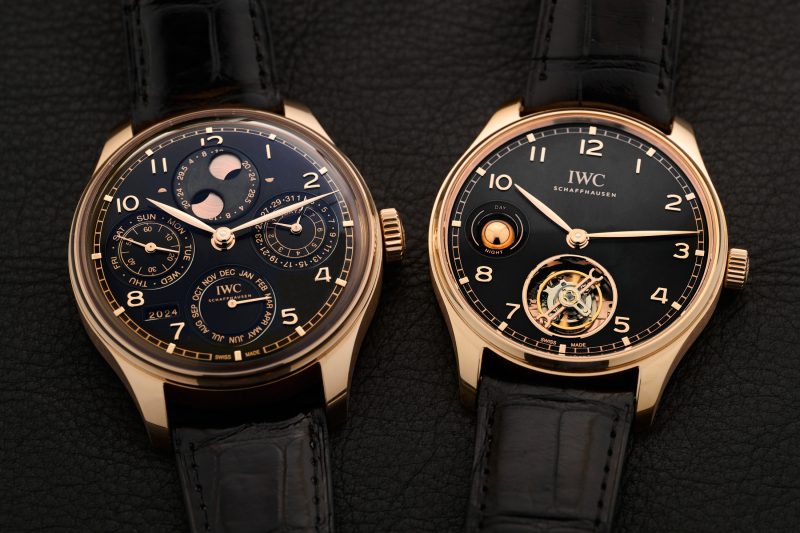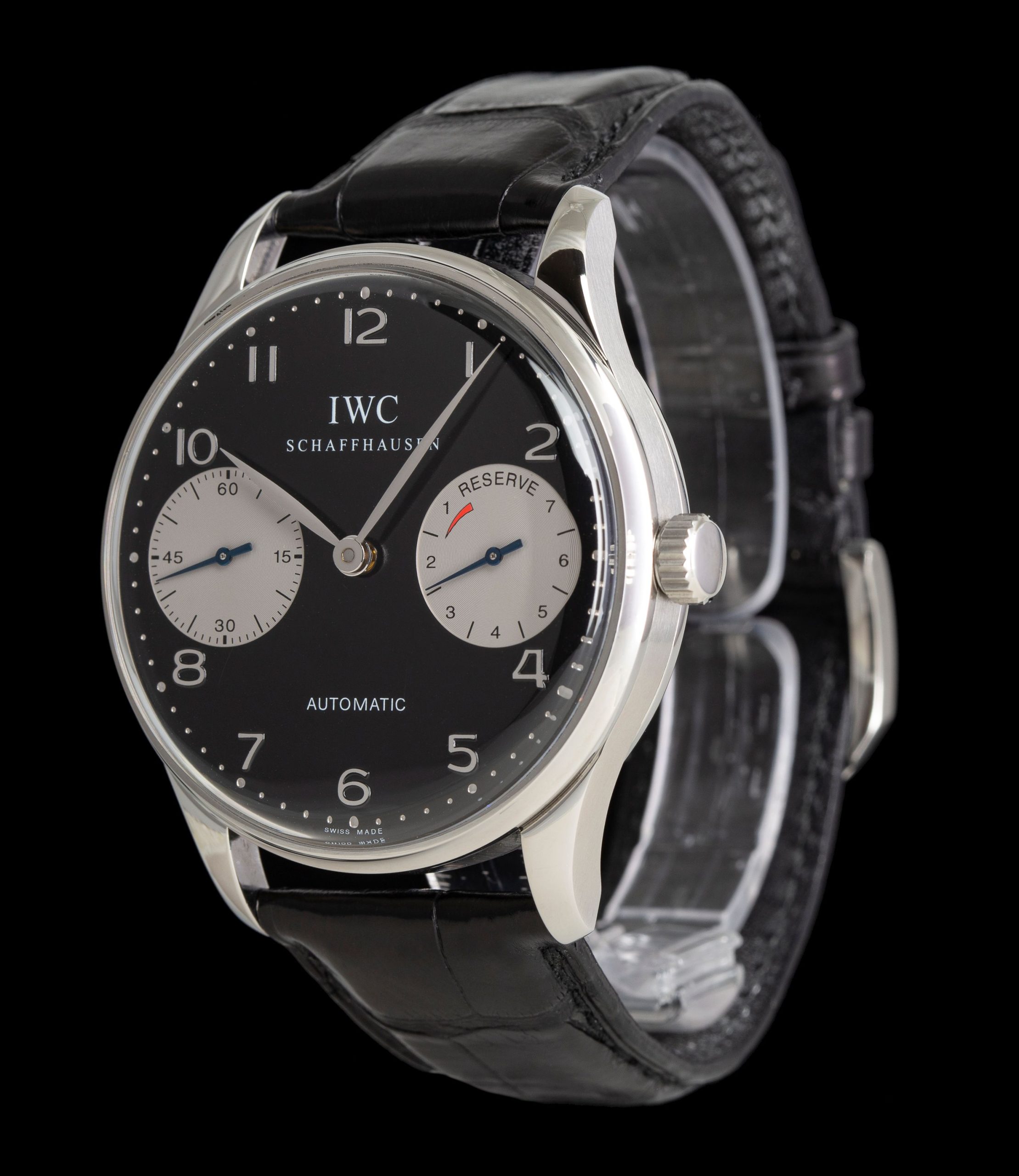Galli Uhren Bijouterie AG
Theaterstrasse 16, on Bellevue
CH-8001 Zurich
Tel: +41 44 262 04 10
Fax: +41 44 252 49 96

The previously successful Portugieser series will be supplemented in 2024 by several new models that follow the tradition of nautical sports chronographs in terms of attractiveness and precision. The introduction of a watch with a secular perpetual calendar is nothing short of sensational, with the Portugieser models setting a new milestone in IWC's history. In any case, the attractive wristwatches feature beautiful and timeless design concepts that are worth a closer look.

The IWC Portugieser is an iconic watch collection that was introduced by IWC Schaffhausen in 1939. Originally developed for Portuguese sailors. The Portugieser is characterised by its elegant design and precise mechanics. With its striking dial and slender cases, it has become a timeless classic that continues to embody IWC’s maritime tradition to this day.
‘Let’s dive into the legendary history of the Portuguese together ’
The IWC Portugieser reference 325 is a legendary model that was first launched by IWC in 1939. This watch was made for two Portuguese traders who were looking for a particularly precise wristwatch for navigation at sea. Equipped with calibres 74 and later 98, this watch offered remarkable accuracy and robustness. Its simple yet elegant design made it a favourite choice for sailors and watch enthusiasts worldwide.


The IWC Portugieser Anniversary Edition from 1993 was revived in a limited edition to mark the 125th anniversary of IWC. This limited edition celebrated the brand’s long history and heritage. Based on the Klaiber 98 pocket watch movement, the watch was equipped with special features such as a transparent case back, which offers a fascinating insight into the precise movement.
At the start of the new millennium, IWC decided to write a new chapter: with the Portugieser Automatic 2000 and its completely new movement. The calibre 5000 had a 7-day power reserve. In addition, 2003 saw the reintroduction of Kurt Klaus’ perpetual calendar, which he had developed back in 1985. This was followed in 2004 by the tourbillon, which emphasised precision. 2010 marked another milestone with the introduction of the successful Yacht Club watch, which continued the Portugieser line with its maritime design and robust construction.

The complex annual calendar movement enables the date, month and day of the week to be displayed precisely without having to interact every other month. The date only needs to be adjusted once a year.
In the early 1980s, IWC chief watchmaker Kurt Klaus succeeded in translating the Gregorian calendar and its many irregularities into a mechanical wristwatch. His ingenious perpetual calendar was used for the first time in 1985 in the DaVinci Perpetual Calendar. This shows the date, the day of the week, the month, the year in four digits and the moon phase.
The tourbillon is a fascinating complication that improves the accuracy of mechanical watches by minimising the effect of gravity on the movement. With the tourbillon, the balance, anchor and escape wheel are placed in a tiny cage and allowed to rotate on its own axis. Only the most experienced master watchmakers are entrusted with the creation of such a work of art and remain solely responsible for ensuring that each individual component harmonises with one another right up to the final stage of the process.

IWC has also revised the collection and launched a new Eternal Calendar.
IWC’s first secular perpetual calendar automatically takes into account the Gregorian calendar’s exceptions for leap years by skipping three leap years in 400 years. In addition, the moon phase display is so precise that it theoretically only deviates by one day after 45 million years.